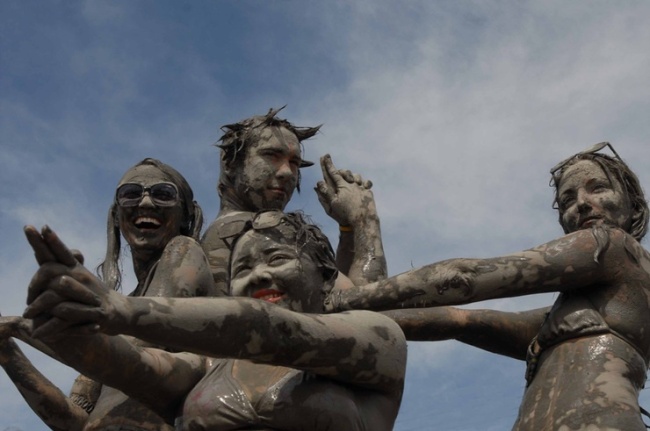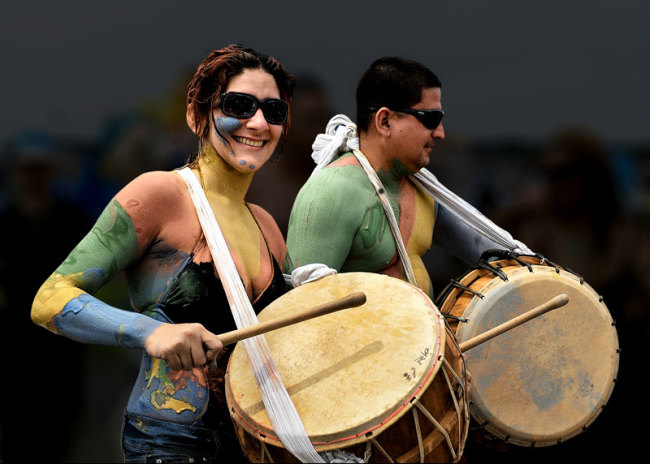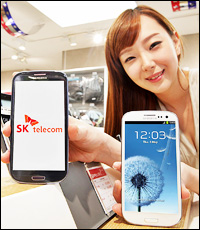How much do we know about The North Korea except their aloofness ?
Since the Korean War, North Korean leaders have used architecture to express the national character of the state. Standing at right is the 170-meter Juche Tower completed in 1982 on the eastern bank of the Taedong River to commemorate founding leader Kim Il-Sung’s 70th birthday.
.jpg)
/ Korea Times file
Book offers virtual tour of North Korea's isolated capital
As a general rule, dictators like to use architecture to demonstrate their power and express aspects of national character. North Korea’s late leader Kim Jong-il (1942-2011) was no exception.

Kim even authored a treatise called “On Architecture (1991),” in which he extols the virtues of “Juche” architecture, that is, works that symbolize and represent the state doctrine of the Democratic People’s Republic of Korea (DPRK).
Situated about 240 km from Seoul, Pyongyang is actually closer to Seoul than Busan.
But most people in the southern half of the Korean Peninsula have only a vague idea about what the North Korean capital looks like, as visiting North Korea is strictly prohibited. For those who are interested in Pyongyang, German architect Philip Meuser’s latest book “Architectural and Cultural Guide Pyongyang” offers a visual guide.
Containing fantastic photos and meticulous essays, the book offers a rare glimpse into one of the most isolated states in the world. The Korean version hit bookstores last week.

“Part of my motivation for this book was to do a guide book to a place that you can’t even visit,” Meuser said in an interview with Dwell, a U.S. magazine devoted to modern architecture and design, in February.
Meuser is an architect and general planner for several German embassies. He’s also head of Dom Publishers.
“Setting aside the glaring issues of human rights and social self-determination, Pyongyang is arguably the world’s best preserved open-air museum of socialist architecture,” Meuser said. He visited the country three times while researching for this book. He labeled Pyongyang “a cabinet of architectural curiosities.”
Pyongyang’s architecture largely falls in to two categories. These are: functional (e. g., apartment buildings, government buildings) or monumental (e. g., statues, commemorative or symbolic structures).
The author also pointed out that because Pyongyang was almost completely destroyed after the Korean War (1950-1953), most buildings were built in the last 60 years.
The general tone of Pyongyang’s architecture is authoritarian. Large monuments dot the cityscape embodying Kim’s cult of personality, linked by absurdly wide boulevards and colossal public squares devoid of people.
The book is divided into two volumes.
The first part is a photographic gallery of Pyongyang buildings divided into major architectural categories — urban planning, residential buildings, cultural venues, education and sport, hotels/department stores, transport infrastructure, and monuments. Building exteriors are shown, with occasional photos of parts of their interiors. The photographs of the many buildings in volume I have brief captions or annotations containing facts about construction or features (e. g., capacity) or historical notes.
Volume 2 contains illustrated essays on varied facets of Pyongyang architecture. In this volume, one finds photographs of buildings under construction, photos of North Koreans in other social settings, pictures of leaders and government officials, and posters on the sides of urban buildings or monuments representing the strength of social unity, the relationship between leaders and the population, and other principles of the nation’s ideology.
Since the Korean War, North Korean leaders have used architecture to express the national character of the state. Standing at right is the 170-meter Juche Tower completed in 1982 on the eastern bank of the Taedong River to commemorate founding leader Kim Il-Sung’s 70th birthday.
.jpg)
/ Korea Times file
Book offers virtual tour of North Korea's isolated capital
As a general rule, dictators like to use architecture to demonstrate their power and express aspects of national character. North Korea’s late leader Kim Jong-il (1942-2011) was no exception.

Kim even authored a treatise called “On Architecture (1991),” in which he extols the virtues of “Juche” architecture, that is, works that symbolize and represent the state doctrine of the Democratic People’s Republic of Korea (DPRK).
Situated about 240 km from Seoul, Pyongyang is actually closer to Seoul than Busan.
But most people in the southern half of the Korean Peninsula have only a vague idea about what the North Korean capital looks like, as visiting North Korea is strictly prohibited. For those who are interested in Pyongyang, German architect Philip Meuser’s latest book “Architectural and Cultural Guide Pyongyang” offers a visual guide.
Containing fantastic photos and meticulous essays, the book offers a rare glimpse into one of the most isolated states in the world. The Korean version hit bookstores last week.

“Part of my motivation for this book was to do a guide book to a place that you can’t even visit,” Meuser said in an interview with Dwell, a U.S. magazine devoted to modern architecture and design, in February.
Meuser is an architect and general planner for several German embassies. He’s also head of Dom Publishers.
“Setting aside the glaring issues of human rights and social self-determination, Pyongyang is arguably the world’s best preserved open-air museum of socialist architecture,” Meuser said. He visited the country three times while researching for this book. He labeled Pyongyang “a cabinet of architectural curiosities.”
Pyongyang’s architecture largely falls in to two categories. These are: functional (e. g., apartment buildings, government buildings) or monumental (e. g., statues, commemorative or symbolic structures).
The author also pointed out that because Pyongyang was almost completely destroyed after the Korean War (1950-1953), most buildings were built in the last 60 years.
The general tone of Pyongyang’s architecture is authoritarian. Large monuments dot the cityscape embodying Kim’s cult of personality, linked by absurdly wide boulevards and colossal public squares devoid of people.
The book is divided into two volumes.
The first part is a photographic gallery of Pyongyang buildings divided into major architectural categories — urban planning, residential buildings, cultural venues, education and sport, hotels/department stores, transport infrastructure, and monuments. Building exteriors are shown, with occasional photos of parts of their interiors. The photographs of the many buildings in volume I have brief captions or annotations containing facts about construction or features (e. g., capacity) or historical notes.
Volume 2 contains illustrated essays on varied facets of Pyongyang architecture. In this volume, one finds photographs of buildings under construction, photos of North Koreans in other social settings, pictures of leaders and government officials, and posters on the sides of urban buildings or monuments representing the strength of social unity, the relationship between leaders and the population, and other principles of the nation’s ideology.









 Korean Power People In Hollywood
Korean Power People In Hollywood  Word from Paris
Word from Paris
 Brightening UV Defense SPF 30 by SkinCeuticals
Brightening UV Defense SPF 30 by SkinCeuticals Ultra Light Daily UV Defense SPF 50 by Kiehl’s
Ultra Light Daily UV Defense SPF 50 by Kiehl’s Ultra Sheer Wet Skin Sunblock Body Mist SPF 50 by Neutrogena
Ultra Sheer Wet Skin Sunblock Body Mist SPF 50 by Neutrogena Mr. Oh!! Moisturizing Balm SPF 30 by banila.co
Mr. Oh!! Moisturizing Balm SPF 30 by banila.co Sun Beam by Benefit
Sun Beam by Benefit Cabana Glama by Benefit
Cabana Glama by Benefit Bronzing Powder Laguna by NARS
Bronzing Powder Laguna by NARS  Pivoine Delicate Shimmering Powder by L’Occitane
Pivoine Delicate Shimmering Powder by L’Occitane  Celebrate Lip Tint by Lush
Celebrate Lip Tint by Lush











